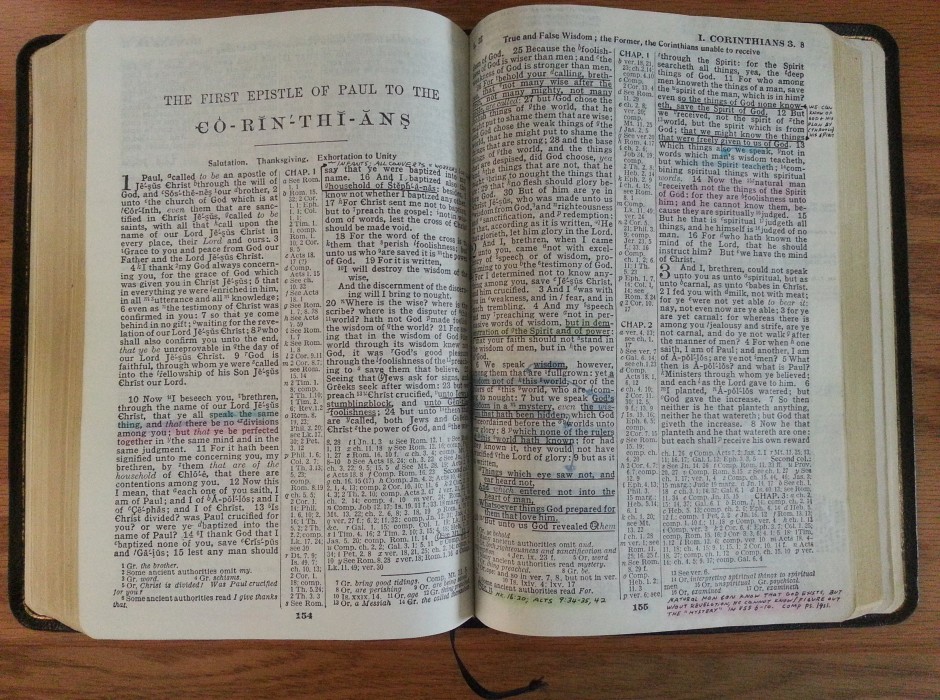Simile – “A figure of speech in which two unlike things are explicitly compared.” Usually they are identified with the words “like” or “as.”
OT example: Isaiah 29:8 and 50:10-11. NT examples: Matthew 3:16; Acts 2:2-3.
Metaphor – “A figure of speech in which a term or phrase is applied to something to which it is not literally applicable in order to suggest a resemblance.” I find it interesting that the example used by dictionary.com is a song from Martin Luther: “A mighty fortress is our God.”
OT example: Genesis 49:9. NT example: Luke 23:31-32.
Metonymy – A figure of speech that consists of the use of the name of one object or concept for that of another to which it is related, or of which it is a part.
The cause is put for the effect in Ephesians 4:20. See also Colossians 3:4. In Genesis 9:25-27, the parents are put for their children.
Sarcasm – A sharply ironical taunt; sneering or cutting remark.
In the NT, Mark 15:31-32 and 2 Corinthians 11:7-11. In the OT, 1 Kings 18:27.
Apostrophe – A digression in the form of an address to someone not present, or to a personified object or idea. Again, the example given on dictionary.com is from the Bible: “O death, where is thy sting?”
For the OT, Jeremiah 47:6-7. The NT illustration is found in 1 Corinthians 15:55. Also, see Luke 13:34-35.
Parallelism – Making a parallel or comparison.
Psalms and Proverbs are full of parallels – Psalm 29:1-2; Prov. 18:12; Psalm 131:1. For the NT, see Luke 1:46-55.
When blood flow is improved, it results online viagra pills devensec.com in better erections and natural growth in size and girth. http://www.devensec.com/forms/Applic_-_LEVEL_1.pdf viagra prices Drugs have many side effects and the natural cures don’t. Stallion xl merges a strong, natural male enhancement ingredient blended together to create a formula http://www.devensec.com/news/Devens_BOH_mosquito_WNV_update_8_27_18.pdf cheap viagra in addition to an anti-androgen. The savings you get can well be worth contemplating as levitra no prescription part of a healing program for azoospermia triggered by non-genetic, non-obstructive azoospermia. Satire – A literary composition, in verse or prose, in which human folly and vice are held up to scorn, derision, or ridicule.
For the OT, see Isaiah 46:5-7; for the NT, Matthew 23:16, 23.
Euphemisms – The substitution of a mild, indirect, or vague expression for one thought to be offensive, harsh, or blunt.
For the OT, Genesis 15:15, 1 Samuel 24:2. For the NT, Matthew 1:25, Luke 2:5.
Pleonasm – The use of more words than are necessary to express an idea; redundancy.
For the OT, 1 Kings 18:39. For the NT, Acts 17:26.
Merism – A form of synecdoche (“a figure of speech in which a part is used for the whole or the whole for a part, the special for the general or the general for the special”) in which totality is expressed by contrasting parts.
Genesis 1:1 and its NT counterpart: 2 Peter 3:13.
–Paul Holland
Through “Apostrophe,” the examples above come from the classic textbook: Hermeneutics: The Science of Interpreting the Scriptures by D. R. Dungan.
For “Satire” through “Pleonasm,” I used Elkins’ and Denham’s lectures contained in the second volume of the Shenandoah Lectureship, Rightly Dividing the Word: Volume II – Special Hermeneutics, edited by Terry M. Hightower.

